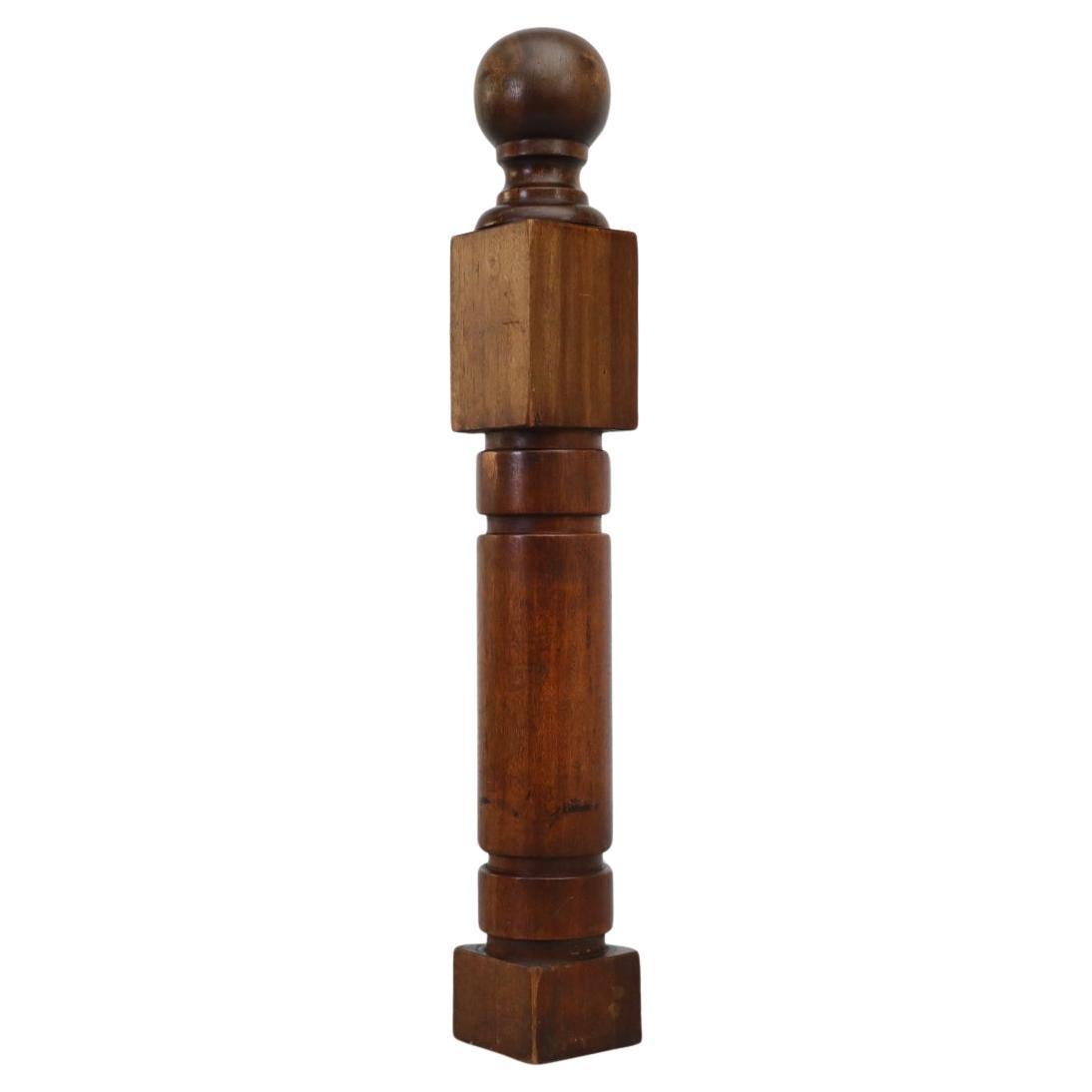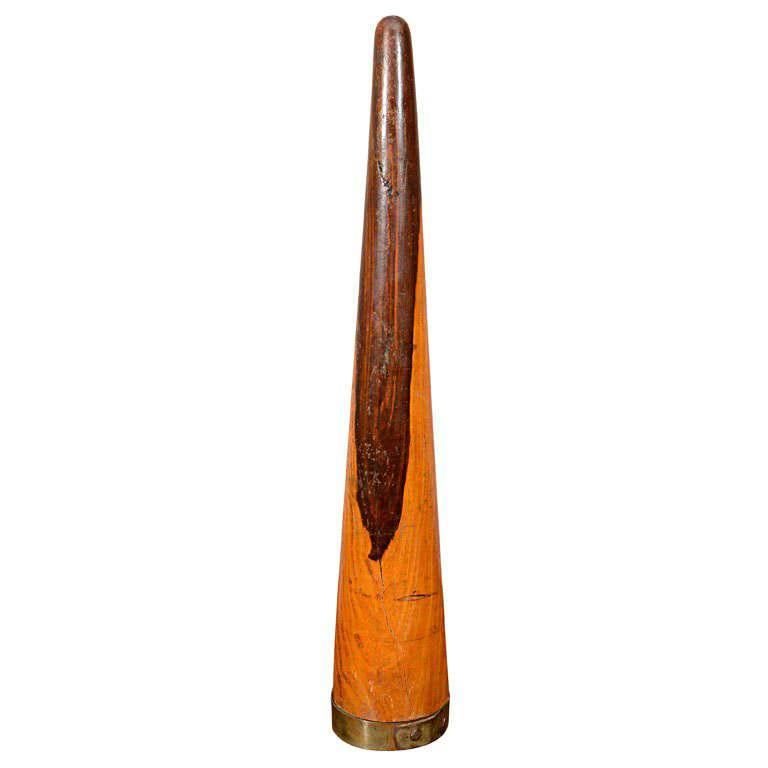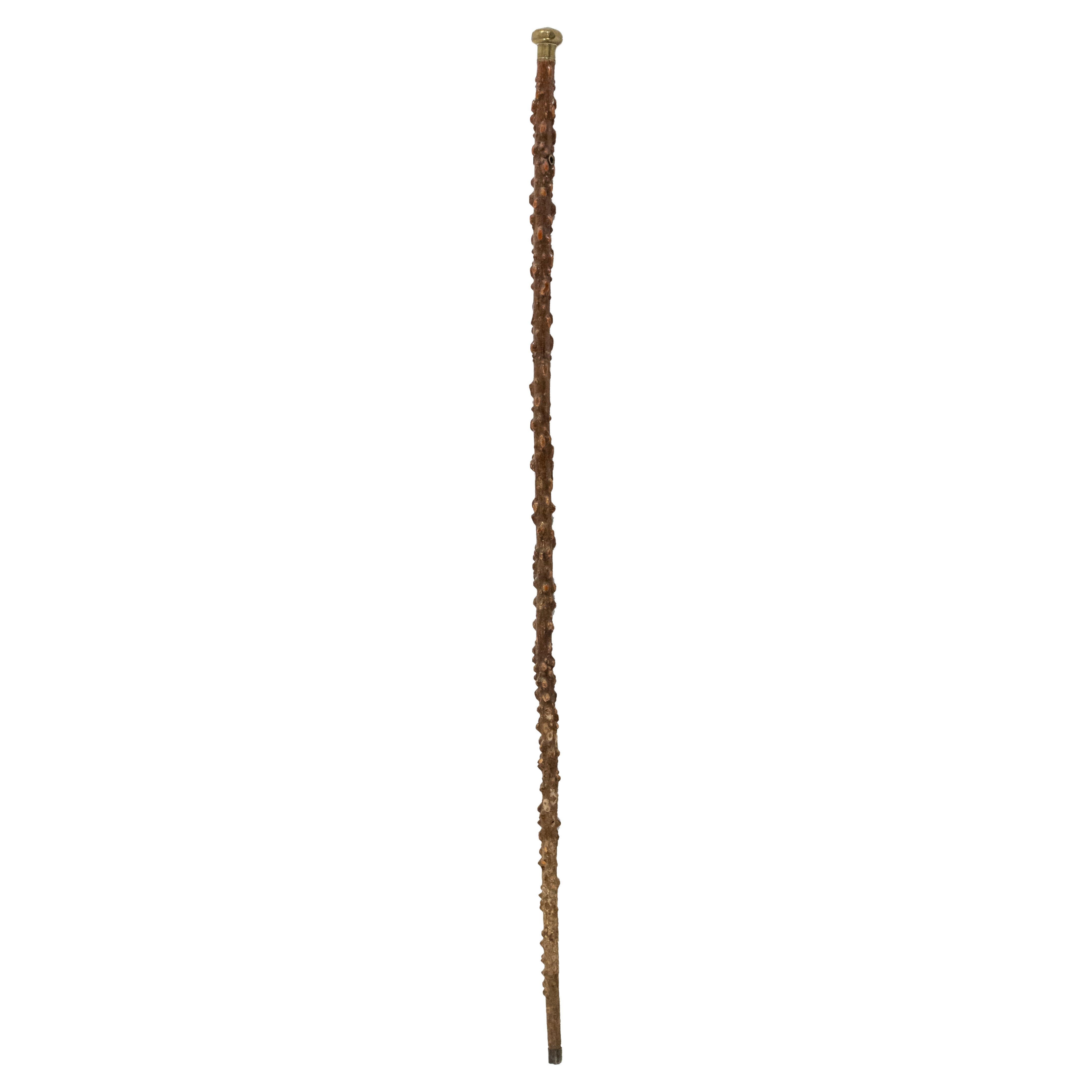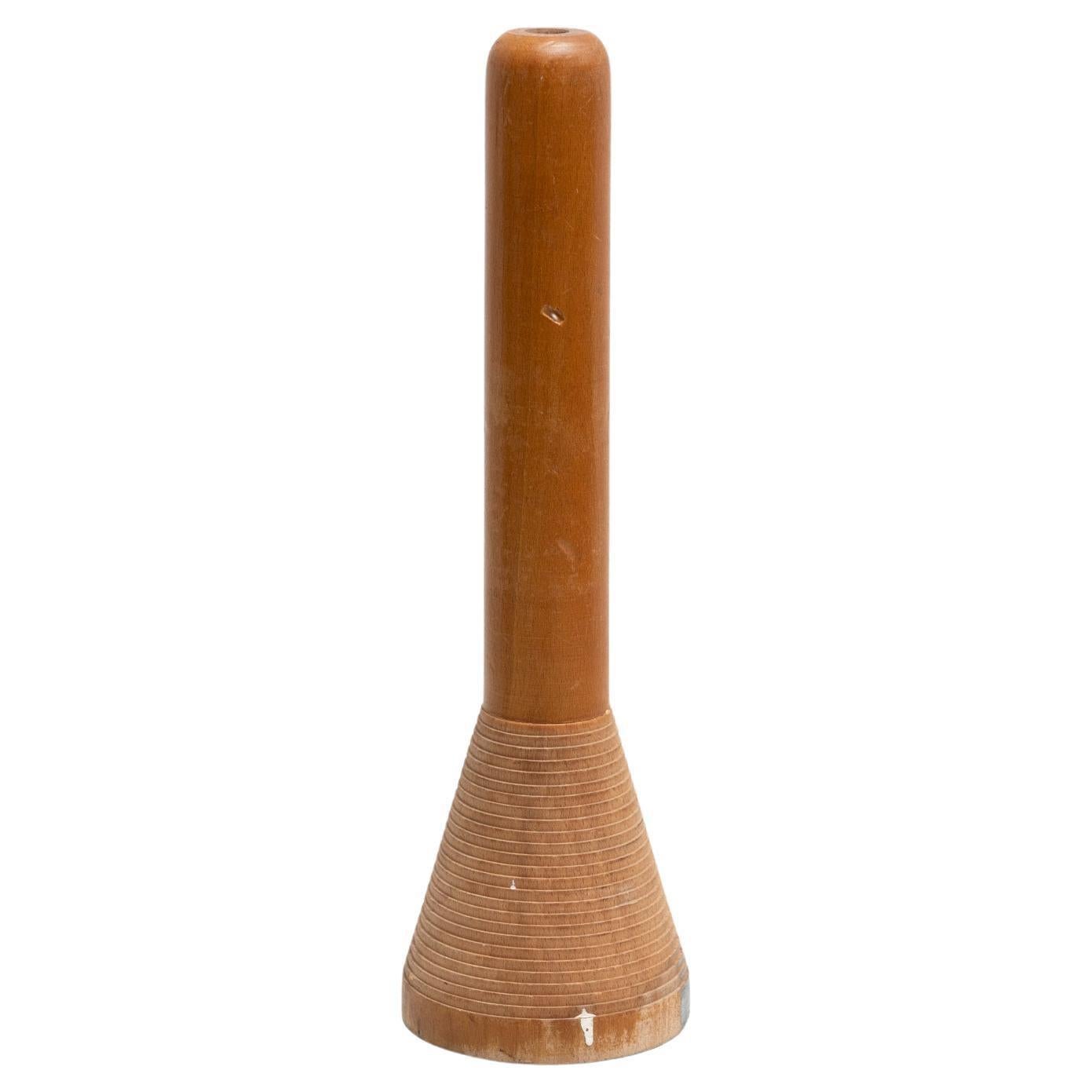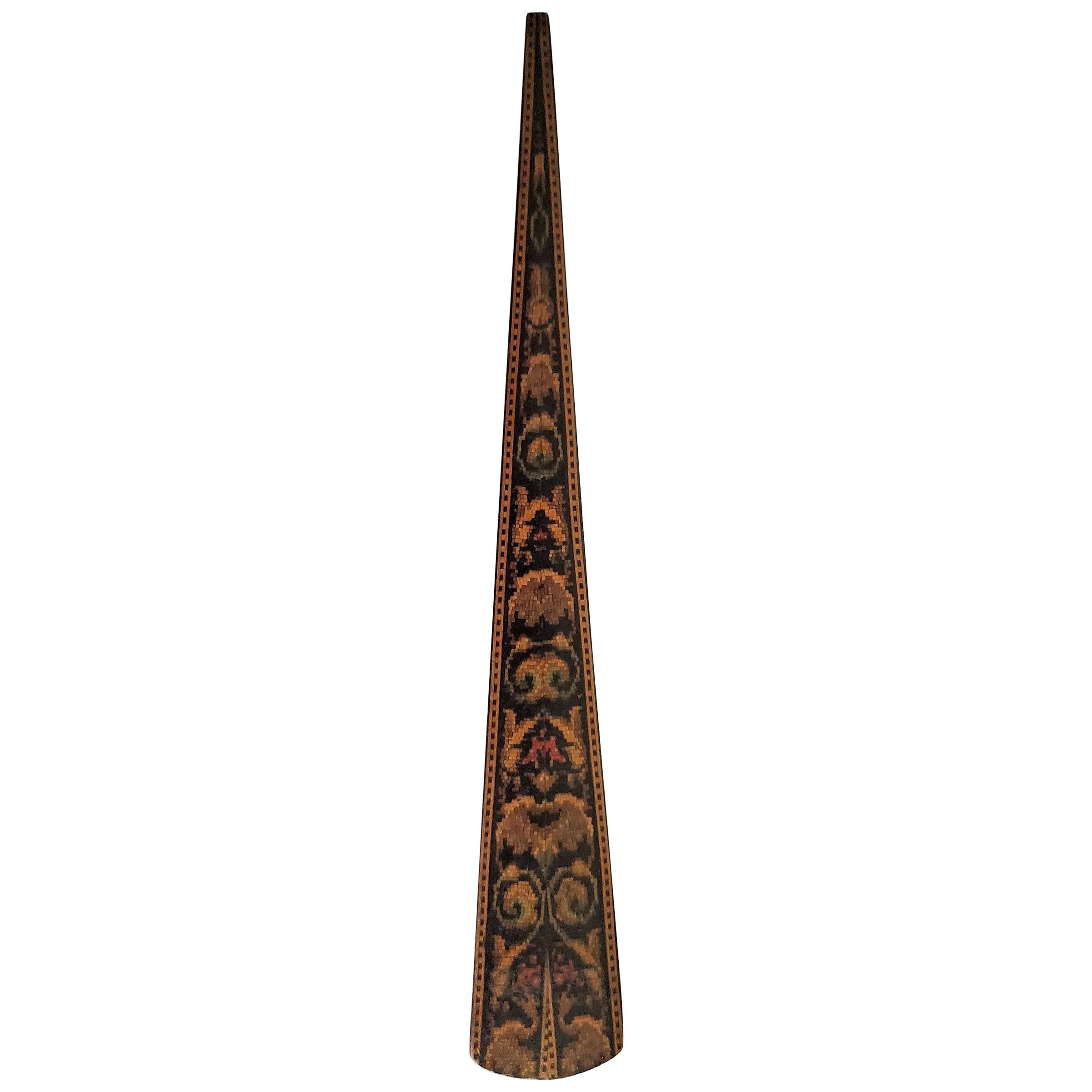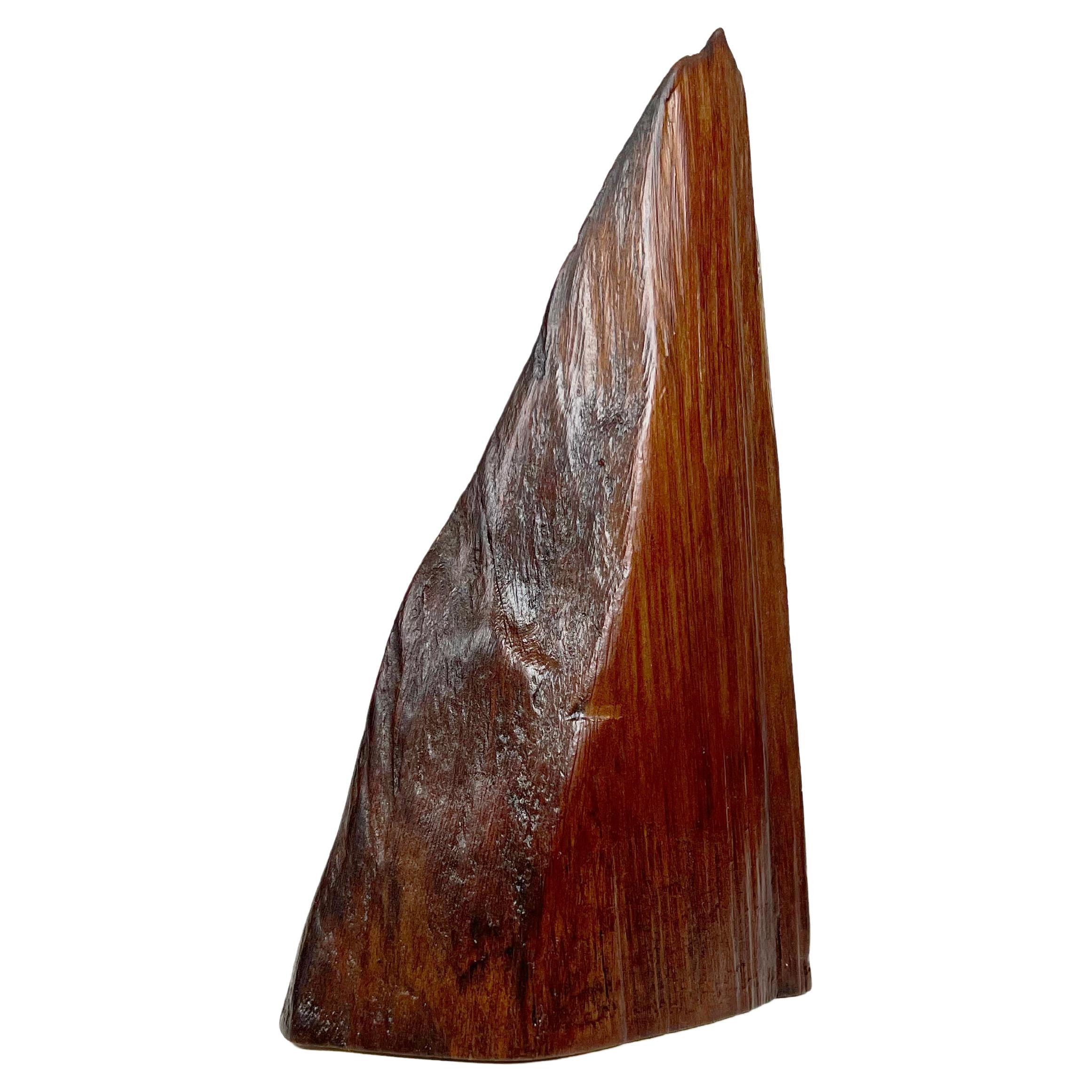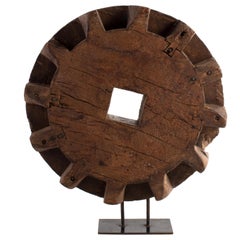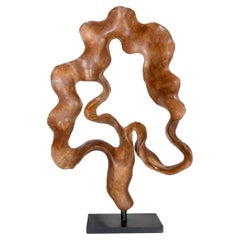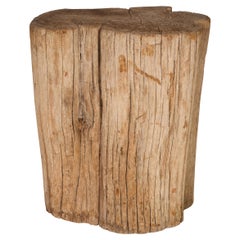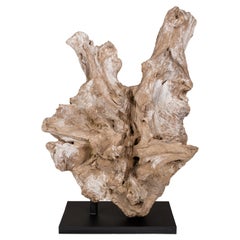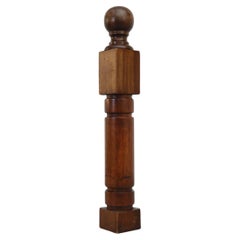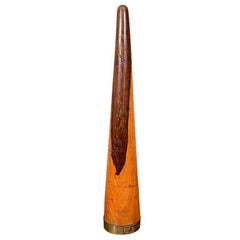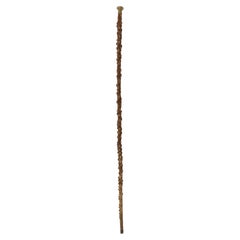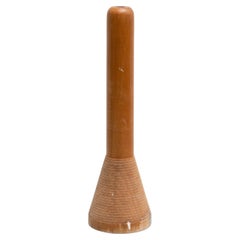Items Similar to Antique English Mahogany Gear Pin
Want more images or videos?
Request additional images or videos from the seller
1 of 6
Antique English Mahogany Gear Pin
$1,095
$1,99044% Off
£835.88
£1,519.0944% Off
€960.90
€1,746.2944% Off
CA$1,540.86
CA$2,800.2944% Off
A$1,713.50
A$3,114.0344% Off
CHF 899.97
CHF 1,635.5644% Off
MX$20,949.27
MX$38,072.1944% Off
NOK 11,214.46
NOK 20,380.6244% Off
SEK 10,572.21
SEK 19,213.4244% Off
DKK 7,171.41
DKK 13,032.9844% Off
About the Item
Add some rustic, vintage flare to your decor with this antique English mahogany wood gear pin from circa 1890. Made in Nottinghamshire, it is ideal for adding style and sophistication to any room. The warm tones of the wood add a charming feel, whilst the gears add an industrial edge. The perfect home decor element for those who love a peek into the past, it's reminiscent of industrialization, adding a chic level of interest. Organic and contemporary aesthetic ,it makes a unique centerpiece that is sure to be the talk of the room!
This piece is a part of Brendan Bass’s one-of-a-kind collection, Le Monde. French for “The World”, the Le Monde collection is made up of rare and hard to find pieces curated by Brendan from estate sales, brocantes, and anywhere beautiful pieces can be found. Pieces have been sourced from France, Italy, Netherlands, South east Asia, and far more.
Globally curated by Brendan Bass, Le Monde furniture and accessories offer modern sensibility, provincial construction, and unparalleled complexity. Showcasing found objects and handcrafted works from different cultures and regions. Our signature aesthetic blends global influences with traditional designs.
Please note that all listings are one-of-a-kind and are not able to be customized or duplicated. Refer to detailed imaging for the condition of the piece.
- Dimensions:Height: 68 in (172.72 cm)Width: 6 in (15.24 cm)Depth: 6 in (15.24 cm)
- Style:Rustic (In the Style Of)
- Materials and Techniques:
- Place of Origin:
- Period:
- Date of Manufacture:1890
- Condition:Wear consistent with age and use.
- Seller Location:Dallas, TX
- Reference Number:Seller: CS315361stDibs: LU868915544111
About the Seller
4.8
Gold Seller
Premium sellers maintaining a 4.3+ rating and 24-hour response times
Established in 1980
1stDibs seller since 2009
442 sales on 1stDibs
Typical response time: <1 hour
- ShippingRetrieving quote...Shipping from: Dallas, TX
- Return Policy
Authenticity Guarantee
In the unlikely event there’s an issue with an item’s authenticity, contact us within 1 year for a full refund. DetailsMoney-Back Guarantee
If your item is not as described, is damaged in transit, or does not arrive, contact us within 7 days for a full refund. Details24-Hour Cancellation
You have a 24-hour grace period in which to reconsider your purchase, with no questions asked.Vetted Professional Sellers
Our world-class sellers must adhere to strict standards for service and quality, maintaining the integrity of our listings.Price-Match Guarantee
If you find that a seller listed the same item for a lower price elsewhere, we’ll match it.Trusted Global Delivery
Our best-in-class carrier network provides specialized shipping options worldwide, including custom delivery.More From This Seller
View AllVintage Carved Decorative Wood Element on Black Steel Base
Located in Dallas, TX
Vintage carved decorative wood element on black steel metal base. In my organic, contemporary, vintage and mid-century modern aesthetic.
This piece is a part of Brendan Bass’s one-o...
Category
20th Century Belgian Other Natural Specimens
Materials
Wood
Teakwood Organic Sculptural Accessory
Located in Dallas, TX
Teakwood organic sculptural accessory
Piece from our one-of-a-kind collection, Le Monde. Exclusive to Brendan Bass.
Globally curated by Brendan Bass, Le Monde furniture and acces...
Category
21st Century and Contemporary Organic Modern Mounted Objects
Materials
Metal
Weathered Teak Display Plinth or Table Base
Located in Dallas, TX
This piece is a part of Brendan Bass’s one-of-a-kind collection, Le Monde. French for “The World”, the Le Monde collection is made up of rare and hard to find pieces curated by Brend...
Category
20th Century Organic Modern Pedestals and Columns
Materials
Teak
Teak Wood Organic Form on Mount
Located in Dallas, TX
Teak driftwood organic form on mount
Piece from our one of kind collection, Le Monde. Exclusive to Brendan Bass.
Globally curated by Brendan Bass, Le Monde furniture and ac...
Category
21st Century and Contemporary Organic Modern Abstract Sculptures
Materials
Teak, Driftwood
Weathered Teak Display Plinth or Table Base
Located in Dallas, TX
This piece is a part of Brendan Bass’s one-of-a-kind collection, Le Monde. French for “The World”, the Le Monde collection is made up of rare and hard to find pieces curated by Brend...
Category
20th Century Organic Modern Pedestals and Columns
Materials
Teak
Untitled Carved Hand
Located in Dallas, TX
The Brendan Bass Estate Collection is an homage to the beauty of vintage and antique
pieces, each artfully concealing endless stories collected through the generations in which they...
Category
20th Century Rustic Figurative Sculptures
Materials
Wood
$1,069
You May Also Like
Vintage Carved Solid Mahogany Post
Located in Los Angeles, CA
Handsomely carved solid mahogany decorative post. Vintage, and originally intended as a banister stop. This is a strikingly beautiful piece that can serve as an eye catching art obje...
Category
Mid-20th Century Brutalist Abstract Sculptures
Materials
Mahogany
19th Century Sailor's Fid Made of Lignum Vitae and Brass
Located in Long Island City, NY
Sailor's fid made of lignum vitae and brass. Once an indispensible tool on tall ships, the fid was used to work rope and open holes in a canvas sail.
Category
Antique 19th Century More Furniture and Collectibles
Materials
Brass
English Victorian Briarwood and Brass Cane
Located in Queens, NY
English Victorian style simple briarwood cane with small brass top and leather cord.
Category
Antique Late 19th Century Victorian Sports Equipment and Memorabilia
Materials
Brass
Rustic Wooden Spool of Thread, circa 1930
Located in Barcelona, ES
Rustic wooden spool of thread, by unknown manufacturer from Spain, circa 1930. In original condition, with minor wear consistent with age and use, preserving a beautiful patina. ...
Category
Vintage 1930s Spanish Mid-Century Modern Abstract Sculptures
Materials
Wood
$177 Sale Price
50% Off
Rare 19th Century English Tunbridgeware Hair Pin or Slide
Located in Dallas, TX
PRESENTING an EXTREMELY UNIQUE and RARE 19C British Tunbridgeware Hair Pin/Bobbin or Slide.
This slide is unlike any of it’s kind we have seen before, it is a VERY RARE survivor.
From circa 1860 – 80 and made in Tunbridge Wells, England.
Made of walnut with gorgeous marquetry inlay on the entirety of the front with classic Tunbridgeware micro-mosaic all over the front. The rear is walnut.
The marquetry inlay appears to be various different woods, namely, maple, walnut and satinwood.
Would have been worn in a Lady’s hair bun with the micro-mosaic facing forward.
This would have belonged to a VERY ELEGANT LADY in the mid to late 19th Century.
Tunbridge ware is a form of decoratively inlaid woodwork, typically in the form of boxes, that is characteristic of Tonbridge and the spa town of Royal Tunbridge Wells in Kent in the 18th and 19th centuries. The decoration typically consists of a mosaic of many very small pieces of different coloured woods that form a pictorial vignette. Shaped rods and slivers of wood were first carefully glued together, then cut into many thin slices of identical pictorial veneer with a fine saw. Elaborately striped and feathered bandings for framing were pre-formed in a similar fashion.
There is a collection of Tunbridge ware in the Tunbridge Wells Museum and Art Gallery in Tunbridge Wells.
The famous makers of Tunbridge ware were in the Tunbridge Wells area of Kent; their most notable work was from circa 1830-1900.
Early makers of Tunbridge ware, in Tunbridge Wells in the mid-18th century, were the Burrows family, and Fenner and Co. In the 19th century, around 1830, James Burrows invented a technique of creating mosaics from wooden tesserae. Henry Hollamby, apprenticed to the Burrows family, set up on his own in 1842 and became an important manufacturer of Tunbridge ware, employing about 40 people.
Edmund Nye (1797–1863) and his father took over the Fenner company when William Fenner retired in 1840, after 30 years in partnership with him. Thomas Barton (1819–1903), previously apprenticed at the Wise factory, joined the Nyes in 1836, and worked as Nye’s designer; he took over the business in 1863 and continued there until his death.
In Tonbridge (near to Tunbridge Wells), George Wise (1703–1779) is known to have had a business in 1746. It continued with his son Thomas, and Thomas’s nephew George (1779–1869), who took over in 1806. In its early years the company made articles such as workboxes and tea caddies with prints of popular views; later items had pictures created from mosaics. Their workshop in Tonbridge, Wise’s Tunbridge Ware Manufactory, was next to the Big Bridge over the Medway; the building was demolished in 1886 to widen the approach to the bridge.
Tunbridge ware became popular with visitors to the spa town of Tunbridge Wells, who bought them as souvenirs and gifts. Articles included cribbage boards, paperweights, writing slopes, snuffboxes and glove boxes.
At the Great Exhibition of 1851, Tunbridge ware by Edmund Nye, Robert Russell and Henry Hollamby was shown; Edmund Nye received a commendation from the judges for his work. He exhibited a table depicting a mosaic of a ship at sea; 110,800 tesserae were used in making the picture.
The manufacturers of Tunbridge ware were cottage industries, and they were no more than nine in Tunbridge Wells and one in Tonbridge. The number declined in the 1880s; competent craftsmen were hard to find, and public tastes changed. After the death of Thomas Barton in 1903 the only surviving firm was Boyce, Brown and Kemp, which closed in 1927.
Marquetry was an old technique which was continued by Nye and Barton to create images such as birds or butterflies.
‘Green Oak’ as caused by the fungus Chlorociboria aeruginascens.
Stickware and half-square mosaic was invented by James Burrows in about 1830: a bunch of wooden sticks of different colours, each having triangular or diamond-shaped cross section, were tightly glued together; in the case of stickware, the resulting block was dried, then turned to form an article such as the base of a pincushion. For half-square mosaic, thin slices were taken from the composite block, and applied to a surface.
Tesselated mosaic, was a development by James Burrows of half-square mosaic; it was adopted by George Wise and Edmund Nye. Minute tesserae were used to form a wide variety of geometric and pictorial designs.
Many sorts of wood were used for the various colours; about 40 were in regular use. Only natural colors were used; green was provided by “green oak”, produced by the action of fungus on fallen oak. Designs for articles were often taken from designs of Berlin wool work.
Category
Antique Late 19th Century English High Victorian Collectible Jewelry
Materials
Satinwood, Walnut
Vintage Redwood Sculpture
Located in Fort Lauderdale, FL
Vintage lacquered found object sculpture from a solid piece of California Redwood. Inscription fixed to the underside reads "A and B people" "Betty and Bob - Lee and Fred" "Californi...
Category
Mid-20th Century American Rustic Natural Specimens
Materials
Reclaimed Wood
More Ways To Browse
Italy Pins
English Provincial Furniture
Vintage Antique Pins
Antique Gear
Antique Gears
Used Industrial Gears
Antique Wood Gear
Shanghai Furniture
Mid Century Brutalist Art
Hand Carved Mexican Furniture
Lucite Vintage Object
Vintage Aluminum Sculpture
Brancusi Sculpture
Contemporary Floor Sculptures
Mid Century Modern Marble Sculpture
Brutalist Mid Century Sculpture
Luxury Modern Sculpture
Midcentury Brutalist Sculpture
